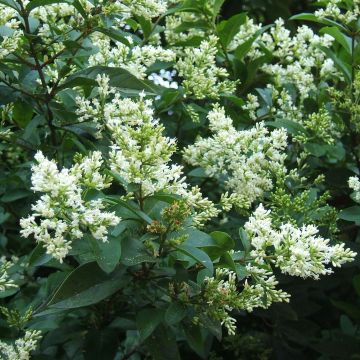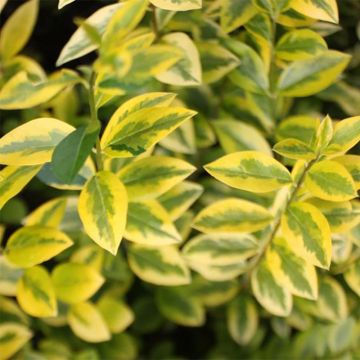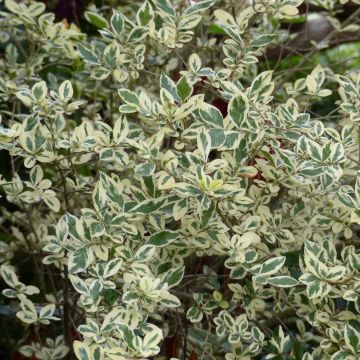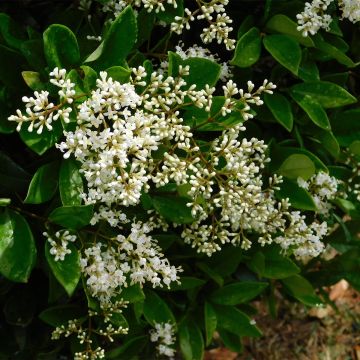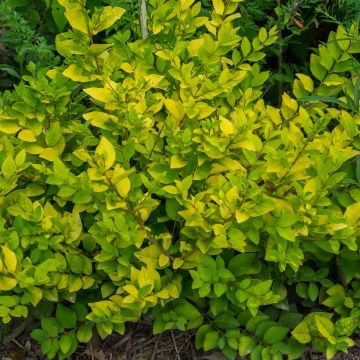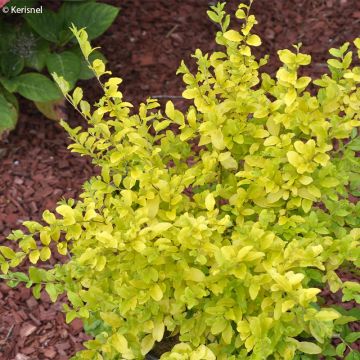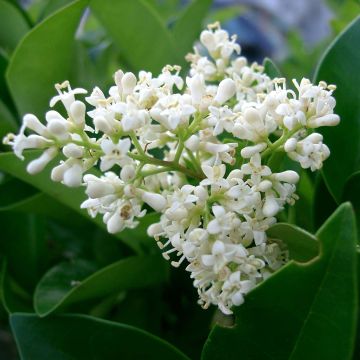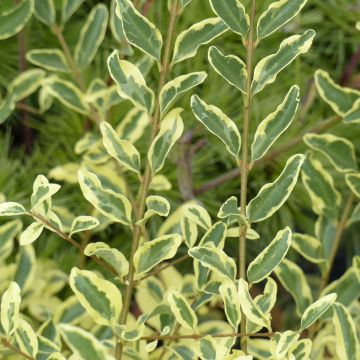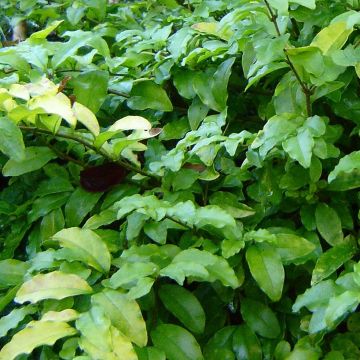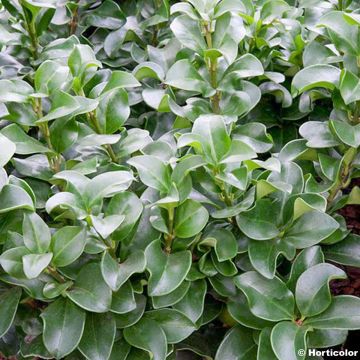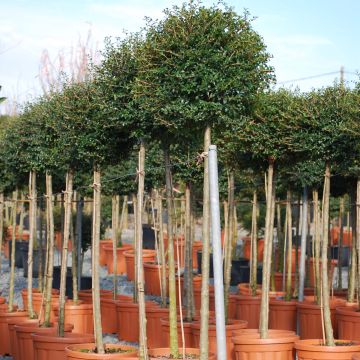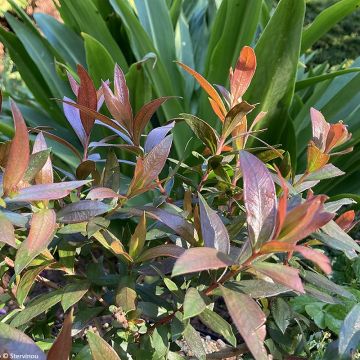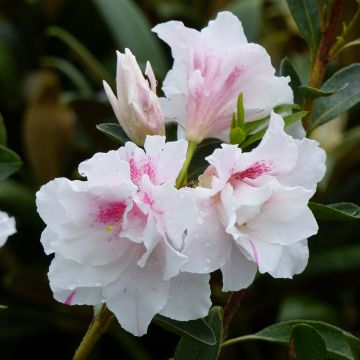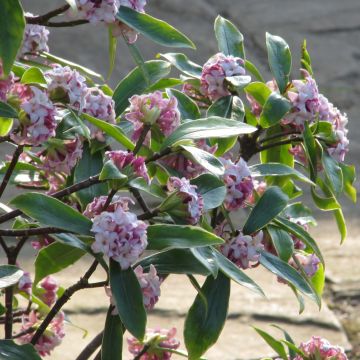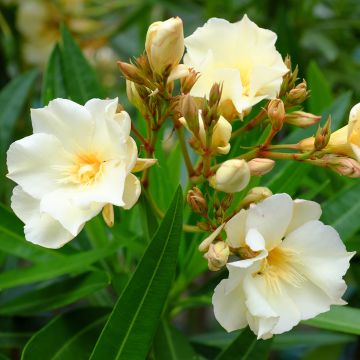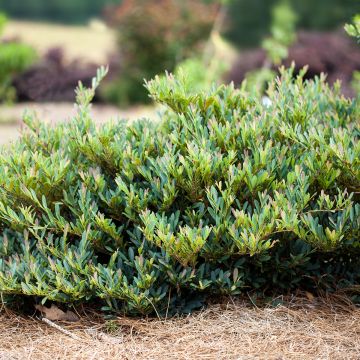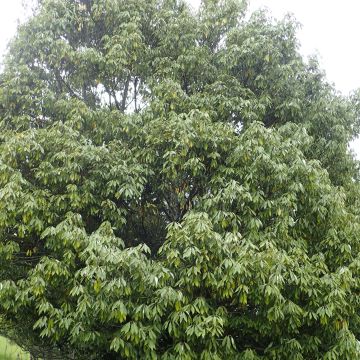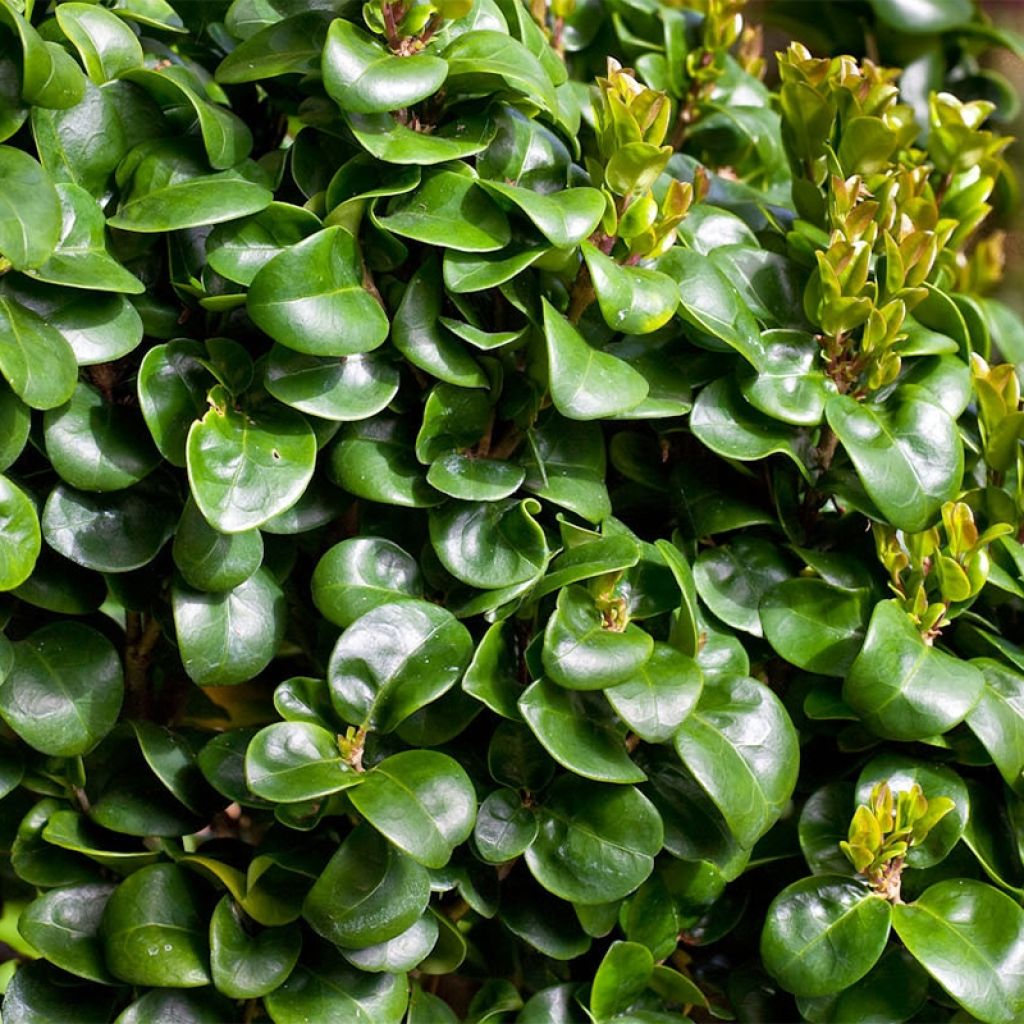

Ligustrum japonicum Coriaceum - Troène du Japon
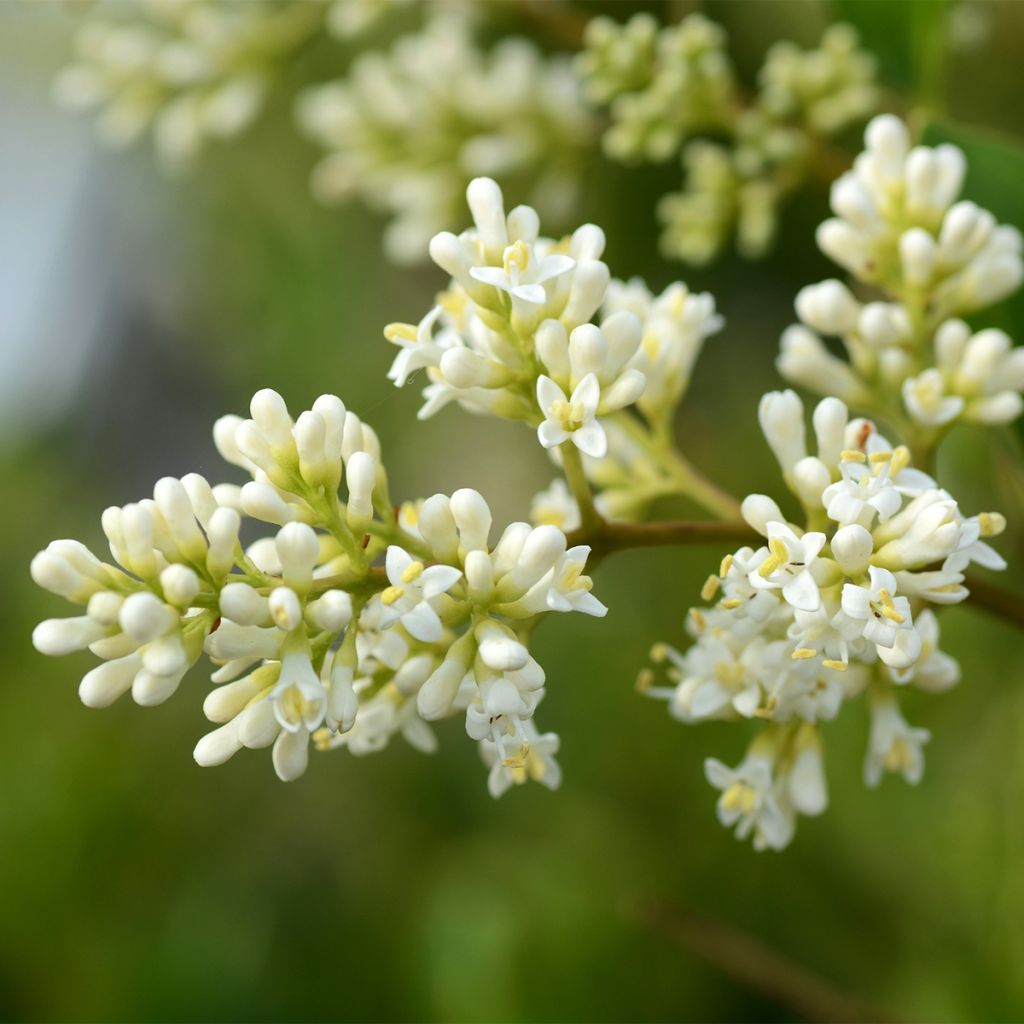

Ligustrum japonicum Coriaceum - Troène du Japon
Ligustrum japonicum Coriaceum - Japanese Privet
Ligustrum japonicum Coriaceum
Japanese Privet
Why not try an alternative variety in stock?
View all →This plant carries a 24 months recovery warranty
More information
We guarantee the quality of our plants for a full growing cycle, and will replace at our expense any plant that fails to recover under normal climatic and planting conditions.
From €5.90 for pickup delivery and €6.90 for home delivery
Express home delivery from €8.90.
Delivery to Corse prohibited: UE law prohibits the import of this plant from mainland France to Corse as part of the fight against Xylella fastidiosa. Please accept our sincere apologies.
More information
Does this plant fit my garden?
Set up your Plantfit profile →
Description
The Ligustrum japonicum 'Coriaceum' is a variety of Japanese privet interesting for its very structured habit and the texture of its foliage. With relatively slow growth and modest pruning, this bush is adorned with pretty evergreen leaves thick and curiously undulate, a shiny green, which give it a different personality. Its creamy white flowering attracts many foraging insects and animates the garden at the height of summer. Hardy, it is as easy to grow as the box to which it can easily substitute. A gently original bush, ideal in a hedge or topiary, in a zen, contemporary garden or in a pot on the terrace.
The Ligustrum japonicum is an evergreen bush from the Oleaceae family native to Korea and Japan. 'Coriaceum' is a horticultural variety that stands out for its lesser development, very structured vegetation and the appearance of its foliage. The young plant, with a bushy habit, will reach about 1.50m (4 ft 11 in) in height after several years, a little less in width. Its rather erect branches bear leaves arranged in an opposite way all year round. They are entire, ovate, leathery, shiny and undulate, bright green in colour, and measure 4 to 10 cm (1.6 to 3.9 in) in length. Flowering occurs in July-August. It takes the form of conical clusters 10 to 15cm (3.9 to 5.9 in) long appearing at the end of the branches. Each inflorescence contains dozens of small creamy white, nectar-rich and fragrant flowers. They give way to black berries, provided the bush is not pruned. All parts of the privet are toxic if ingested.
The Ligustrum japonicum 'Coriaceum', elegant and decorative all year round, is used in hedges, isolated, in groupings or even in pots. Its moderate growth exempts the gardener from any pruning, even when it is installed in a dividing hedge. Supporting pruning well, it lends itself wonderfully to topiary art, and can perfectly replace the box. Also combine it with other easy-to-handle bushes, for example persistent viburnums, Abelias, Aucuba or Berberis.
Report an error about the product description
Ligustrum japonicum Coriaceum - Japanese Privet in pictures
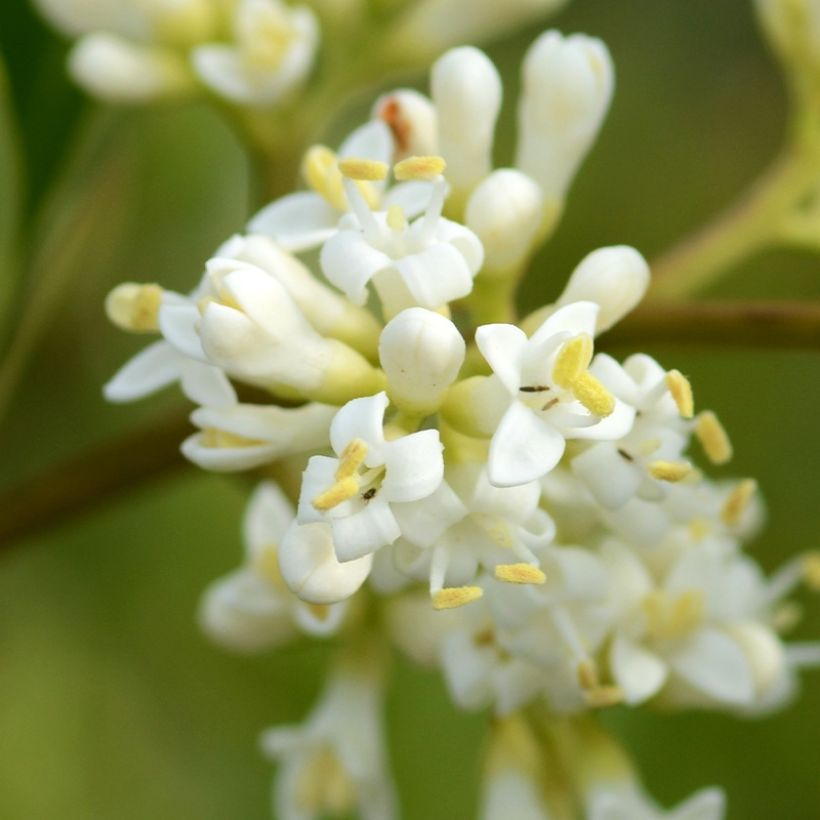

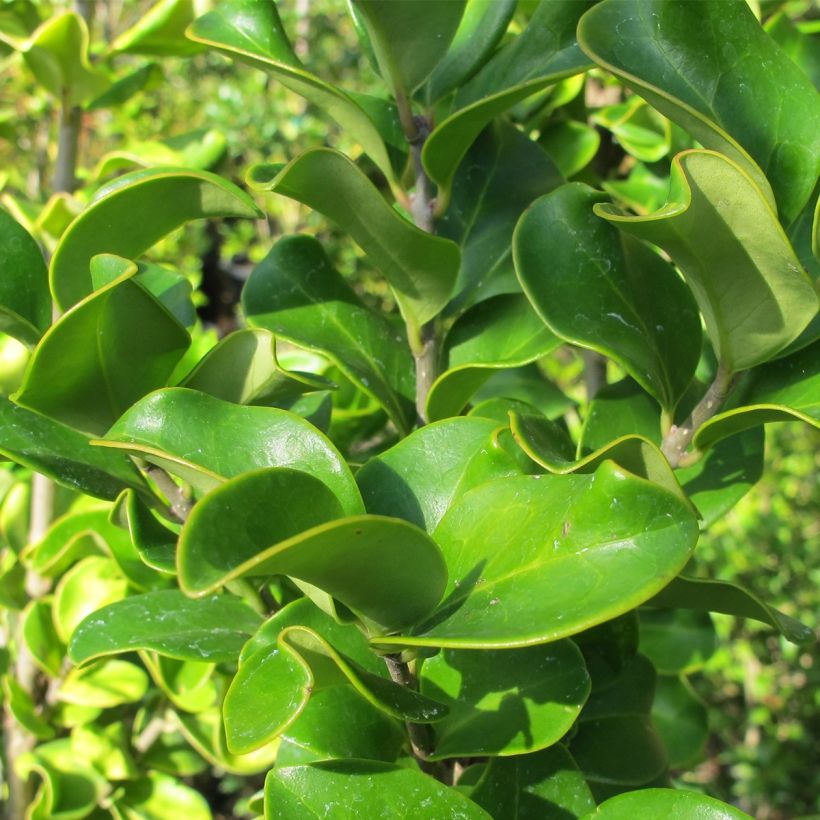

Plant habit
Flowering
Foliage
Botanical data
Ligustrum
japonicum
Coriaceum
Oleaceae
Japanese Privet
Cultivar or hybrid
Other Ligustrum - Privet
Planting and care
The Ligustrum japonicum is planted in spring or autumn at 80cm (31.5 in) spacing for hedges. Dig a hole two and a half times the pot, loosen the bottom and place a large handful of horticultural compost or mix slow-release fertiliser with the loose soil. Water well especially the first summers, mulch the soil to keep the coolness and halve the branches to provoke the start of new shoots. Then each year, prune the new shoots by half to ramify your hedge well. This bush is not very demanding in terms of soil, it will even adapt in poor and limestone soil. Once well established, it completely dispenses with watering in summer in the vast majority of our regions. Privets are quite resistant to parasitic and diseases. However, they can be affected by vine weevil larvae or caterpillars.
Planting period
Intended location
Care
This item has not been reviewed yet - be the first to leave a review about it.
Evergreen shrubs
Haven't found what you were looking for?
Hardiness is the lowest winter temperature a plant can endure without suffering serious damage or even dying. However, hardiness is affected by location (a sheltered area, such as a patio), protection (winter cover) and soil type (hardiness is improved by well-drained soil).

Photo Sharing Terms & Conditions
In order to encourage gardeners to interact and share their experiences, Promesse de fleurs offers various media enabling content to be uploaded onto its Site - in particular via the ‘Photo sharing’ module.
The User agrees to refrain from:
- Posting any content that is illegal, prejudicial, insulting, racist, inciteful to hatred, revisionist, contrary to public decency, that infringes on privacy or on the privacy rights of third parties, in particular the publicity rights of persons and goods, intellectual property rights, or the right to privacy.
- Submitting content on behalf of a third party;
- Impersonate the identity of a third party and/or publish any personal information about a third party;
In general, the User undertakes to refrain from any unethical behaviour.
All Content (in particular text, comments, files, images, photos, videos, creative works, etc.), which may be subject to property or intellectual property rights, image or other private rights, shall remain the property of the User, subject to the limited rights granted by the terms of the licence granted by Promesse de fleurs as stated below. Users are at liberty to publish or not to publish such Content on the Site, notably via the ‘Photo Sharing’ facility, and accept that this Content shall be made public and freely accessible, notably on the Internet.
Users further acknowledge, undertake to have ,and guarantee that they hold all necessary rights and permissions to publish such material on the Site, in particular with regard to the legislation in force pertaining to any privacy, property, intellectual property, image, or contractual rights, or rights of any other nature. By publishing such Content on the Site, Users acknowledge accepting full liability as publishers of the Content within the meaning of the law, and grant Promesse de fleurs, free of charge, an inclusive, worldwide licence for the said Content for the entire duration of its publication, including all reproduction, representation, up/downloading, displaying, performing, transmission, and storage rights.
Users also grant permission for their name to be linked to the Content and accept that this link may not always be made available.
By engaging in posting material, Users consent to their Content becoming automatically accessible on the Internet, in particular on other sites and/or blogs and/or web pages of the Promesse de fleurs site, including in particular social pages and the Promesse de fleurs catalogue.
Users may secure the removal of entrusted content free of charge by issuing a simple request via our contact form.
The flowering period indicated on our website applies to countries and regions located in USDA zone 8 (France, the United Kingdom, Ireland, the Netherlands, etc.)
It will vary according to where you live:
- In zones 9 to 10 (Italy, Spain, Greece, etc.), flowering will occur about 2 to 4 weeks earlier.
- In zones 6 to 7 (Germany, Poland, Slovenia, and lower mountainous regions), flowering will be delayed by 2 to 3 weeks.
- In zone 5 (Central Europe, Scandinavia), blooming will be delayed by 3 to 5 weeks.
In temperate climates, pruning of spring-flowering shrubs (forsythia, spireas, etc.) should be done just after flowering.
Pruning of summer-flowering shrubs (Indian Lilac, Perovskia, etc.) can be done in winter or spring.
In cold regions as well as with frost-sensitive plants, avoid pruning too early when severe frosts may still occur.
The planting period indicated on our website applies to countries and regions located in USDA zone 8 (France, United Kingdom, Ireland, Netherlands).
It will vary according to where you live:
- In Mediterranean zones (Marseille, Madrid, Milan, etc.), autumn and winter are the best planting periods.
- In continental zones (Strasbourg, Munich, Vienna, etc.), delay planting by 2 to 3 weeks in spring and bring it forward by 2 to 4 weeks in autumn.
- In mountainous regions (the Alps, Pyrenees, Carpathians, etc.), it is best to plant in late spring (May-June) or late summer (August-September).
The harvesting period indicated on our website applies to countries and regions in USDA zone 8 (France, England, Ireland, the Netherlands).
In colder areas (Scandinavia, Poland, Austria...) fruit and vegetable harvests are likely to be delayed by 3-4 weeks.
In warmer areas (Italy, Spain, Greece, etc.), harvesting will probably take place earlier, depending on weather conditions.
The sowing periods indicated on our website apply to countries and regions within USDA Zone 8 (France, UK, Ireland, Netherlands).
In colder areas (Scandinavia, Poland, Austria...), delay any outdoor sowing by 3-4 weeks, or sow under glass.
In warmer climes (Italy, Spain, Greece, etc.), bring outdoor sowing forward by a few weeks.


































